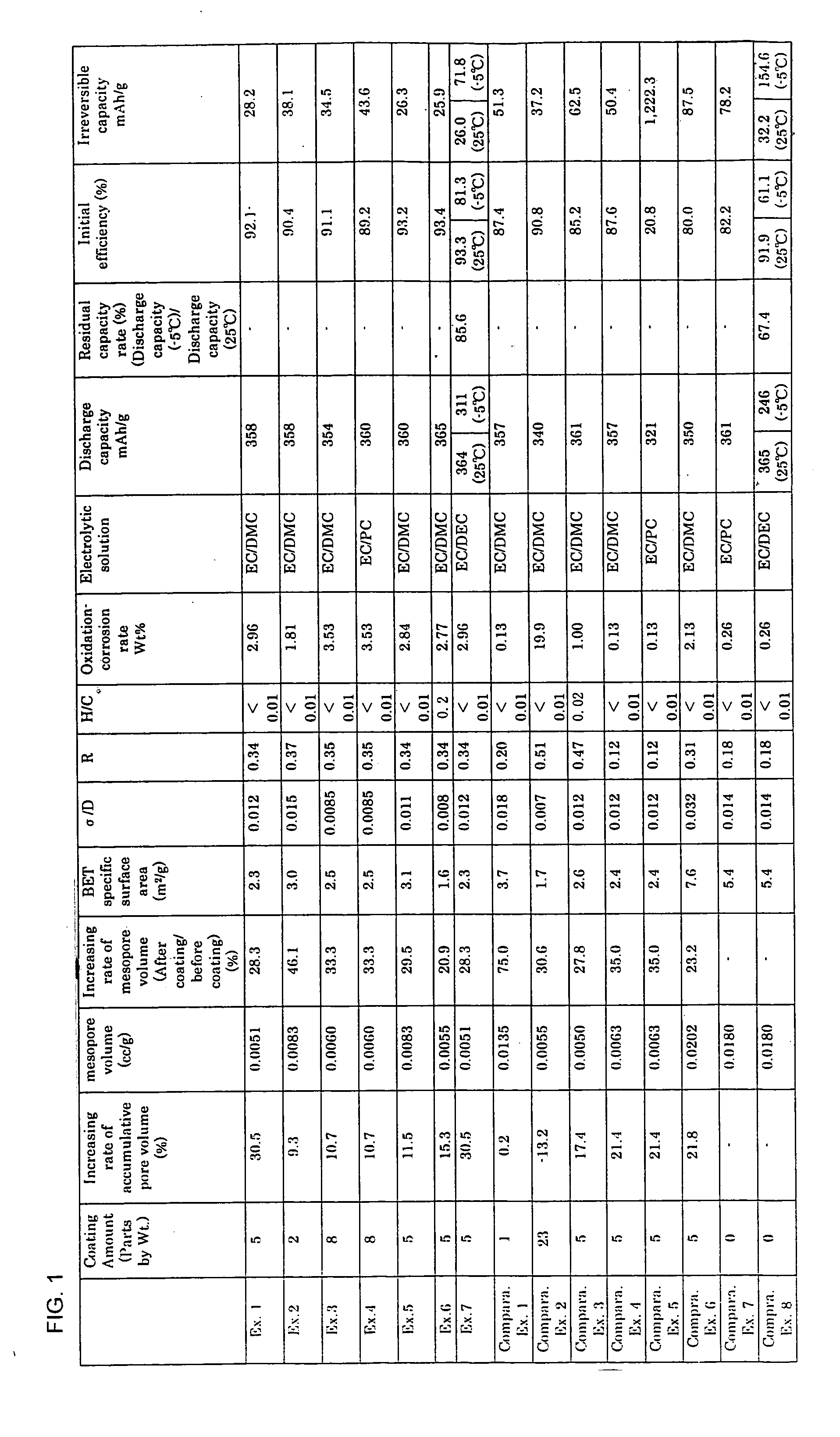Negative electrode material for lithium ion secondary battery
- Summary
- Abstract
- Description
- Claims
- Application Information
AI Technical Summary
Benefits of technology
Problems solved by technology
Method used
Image
Examples
example 1
[0036] 50 parts by weight polyvinyl alcohol powder was mixed in 100 parts by weight natural graphite powder having an average interlayer spacing d002 of 0.3354 nm, a three dimensional crystallite size L(112) of 27 nm, and an average particle size of 20 μm, as defined by the Gakushin-method for X-ray diffraction of carbon using an X-ray diffraction device, by dry blending at room temperature for ten minutes using a mixer. Then, the mixed graphite powder was put in a graphite crucible and closed the lid. With the temperature increased to 900° C. at a temperature rising rate of 300° C. / h, the mixture was held at 900° C. for one hour and thereafter it was cooled down. Then, the mixture was sifted out through a screen with an opening size of 63 μm. The coated graphite powder with its surface coated with carbonized material, having a ratio of standard deviation to an average particle size of 24 μm (σ / D) of 0.012 and a mesopore volume of 0.0051 cc / g, was obtained in the manner mentioned ab...
example 2
[0037] Except that a mixing ratio of polyvinyl alcohol powder was changed to 25 parts by weight, the same prescription as that of Example 1 was taken to produce a coated graphite powder coated with a carbonized material having a ratio of standard deviation to an average particle size of 24 μm (σ / D) of 0.015 and a mesopore volume of 0.0083 cc / g. This coated graphite powder was electrochemically measured in the same manner as in Example 1.
example 3
[0038] Except that a mixing ratio of polyvinyl alcohol powder was changed to 75 parts by weight, the same prescription as that of Example 1 was taken to produce a coated graphite powder coated with a carbonized material having a ratio of standard deviation to an average particle size of 24 μm (σ / D) of 0.0085 and a mesopore volume of 0.0060 cc / g. This coated graphite powder was electrochemically measured in the same manner as in Example 1.
PUM
| Property | Measurement | Unit |
|---|---|---|
| Temperature | aaaaa | aaaaa |
| Length | aaaaa | aaaaa |
| Length | aaaaa | aaaaa |
Abstract
Description
Claims
Application Information
 Login to View More
Login to View More - R&D
- Intellectual Property
- Life Sciences
- Materials
- Tech Scout
- Unparalleled Data Quality
- Higher Quality Content
- 60% Fewer Hallucinations
Browse by: Latest US Patents, China's latest patents, Technical Efficacy Thesaurus, Application Domain, Technology Topic, Popular Technical Reports.
© 2025 PatSnap. All rights reserved.Legal|Privacy policy|Modern Slavery Act Transparency Statement|Sitemap|About US| Contact US: help@patsnap.com


